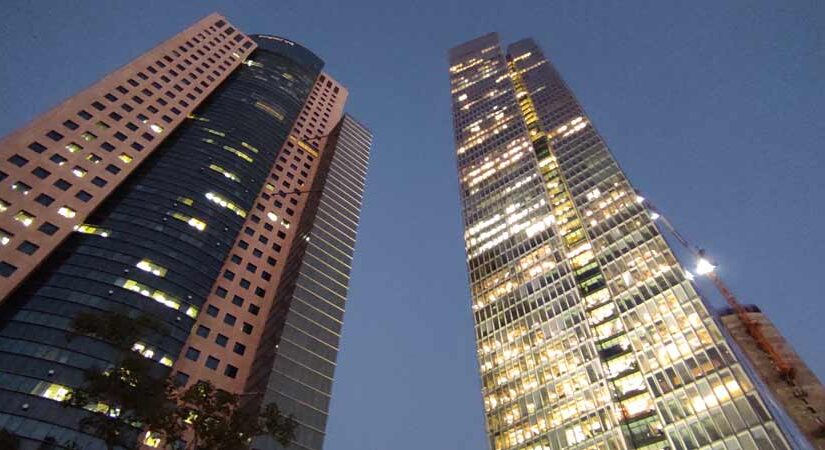The music of Israel is a combination of Jewish and non-Jewish music traditions that have come together over…
#33 Tel Aviv has the world’s largest collection of Bauhaus style buildings

The Bauhaus movement, originating in Germany in the early 20th century, had a profound impact on modern architecture and design. Today, Tel Aviv is known for being one of the world’s largest collections of Bauhaus buildings, earning it the nickname “The White City.” In 2003, the United Nations declared Tel Aviv’s Bauhaus architecture a World Heritage Site, recognizing its historical and cultural significance.
The Bauhaus buildings in Tel Aviv are characterized by their clean lines, functional design, and use of materials such as steel, glass, and concrete. The buildings are also notable for their use of space, with open floor plans and an emphasis on natural light. This style of architecture, known as International Style, was embraced by architects in Tel Aviv in the 1930s and 1940s as they sought to create a new, modern city that reflected the ideals of the time.
One of the most famous Bauhaus buildings in Tel Aviv is the Weizmann House, designed by German architect Erich Mendelsohn. This building, now a museum, is a prime example of Bauhaus design, with its simple geometric forms and use of materials such as steel and glass. Another notable Bauhaus building is the Dizengoff House, designed by the architect Arieh Sharon. With its clean lines and use of concrete and glass, this building is considered one of the finest examples of Bauhaus architecture in Tel Aviv.
In conclusion, the Bauhaus buildings in Tel Aviv are a testament to the enduring impact of the Bauhaus movement on modern architecture. These buildings, with their clean lines, functional design, and use of materials such as steel, glass, and concrete, have helped to shape the city into one of the world’s leading centers of modern architecture. The Bauhaus buildings of Tel Aviv offer a unique glimpse into the history of the city, and they remain an important part of its cultural heritage to this day.
Bauhaus architecture was introduced in the 1920s and 1930s by German Jewish architects who settled in Palestine after the rise of the Nazis. Tel Aviv’s White City, around the city center, contains more than 5,000 Modernist-style buildings inspired by the Bauhaus school and Le Corbusier. Construction of these buildings, later declared protected landmarks and, collectively, a UNESCO World Heritage Site, continued until the 1950s in the area around Rothschild Boulevard. Some 3,000 buildings were created in this style between 1931 and 1939 alone. In the 1960s, this architectural style gave way to office towers and a chain of waterfront hotels and commercial skyscrapers. Some of the city’s Modernist buildings were neglected to the point of ruin. Before legislation to preserve this landmark architecture, many of the old buildings were demolished. Efforts are under way to refurbish Bauhaus buildings and restore them to their original condition.
The White City of Tel Aviv is a collection of over 4,000 buildings built in the International Style in the 1930s. Many Jewish architects who had studied at the German Bauhaus school designed significant buildings here. A large proportion of the buildings built in the International Style can be found in the area planned by Patrick Geddes, north of Tel Aviv’s main historical commercial center. In 1994, UNESCO proclaimed the White City a World Heritage Site, describing the city as “a synthesis of outstanding significance of the various trends of the Modern Movement in architecture and town planning in the early part of the 20th century”. In 1996, Tel Aviv’s White City was listed as a World Monuments Fund endangered site.
The International Style or internationalism is a major architectural style that was developed in the 1920s and 1930s and was closely related to modernism and modernist architecture. It was first defined by Museum of Modern Art curators Henry-Russell Hitchcock and Philip Johnson in 1932, based on works of architecture from the 1920s. The terms rationalist architecture and modern movement are often used interchangeably with International Style, although the former is mostly used in the English-speaking world to specifically refer to the Italian rationalism, or even the International Style that developed in Europe as a whole.
It is defined by the Getty Research Institute as “the style of architecture that emerged in Holland, France, and Germany after World War I and spread throughout the world, becoming the dominant architectural style until the 1970s. The style is characterized by an emphasis on volume over mass, the use of lightweight, mass-produced, industrial materials, rejection of all ornament and color, repetitive modular forms, and the use of flat surfaces, typically alternating with areas of glass.”


